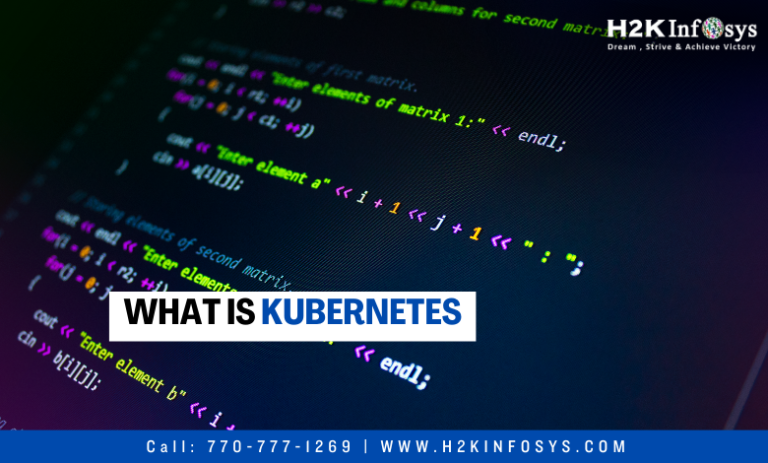Kubernetes is open source container orchestrion platform which automates many manual procedures which are involved in deploying, managing and scaling containerised applications.
Kubernets clusters
The cluster combined group of hosts that executes Linux containers and Kubernetes helps us efficiently manage the clusters. Kubernetes clusters that spread hosts all over on premise, public, private or hybrid clouds. Kubernetes is having a platform for hosting cloud native applications has a scaling like real time data streaming through the Apache Kafka.
Kubernetes was developed and designed by the engineer at google. Google was early contributor to the Linux container technology and also generates more than 2 billion container deployments a week, that are powered by its internal platforms. Redhat software is one of the companies that team up with Google on Kubernetes.
The advantage of Kubernetes in the environment are optimising application development of all the cloud that gives us the platform to schedule and run containers on the clusters of physical or may be virtual machines. This will provide support to implement and depend on the container based infrastructure in the production environments. The Kubernetes is all about automation of operational tasks, we can do many things of the same things other application platforms or management systems provides us to do for the containers. Developers will have native apps with Kubernetes as a runtime platform for using Kubernetes patterns. These patterns are the tools a Kubernetes developer requires to create the container based applications and services.
With Kubernetes we can:
- This is to arrange containers around the multiple hosts.
- This is to know the efficient use of hardware to maximise resources that needed to run our enterprise apps.
- This is to control and automatise application deployments and updates.
- For mount and also storage to run the stageful apps.
- Scaling containerised applications and resources on the fly.
Here the Health check and self heal our apps with the auto replace them. With Kubernetes we can
- This is to arrange containers around the multiple hosts.
- This is to know the efficient use of hardware to maximise resources that needed to run our enterprise apps.
- This is to control and automatise application deployments and updates.
- For mount and also storage to run the stageful apps.
- Scaling containerised applications and resources on the fly.
- Here the Health check and self heal our apps with the auto replacements, autorestart and auto replication and also autoscalingents, autorestart and auto replication.
How Kubernetes works?
The working Kubernetes deployment is a cluster. This can be viewed as a Kubernetes two parts, the control plane and compute machines or nodes. The node has its own Linux environment and will either physical or virtual machine. The particular node runs pods, which are made up of containers.
The control plane is responsible for handling the desired state for cluster, like which applications executes which the container images they use. Compute machines run the application and also workloads.
Kubernetes will run up to top of an operating system and communicates with pods of containers running on the nodes. The Kubernetes control plane process commands from the administrator and relays on those instructions to the compute machines. This works with multitude of services to decide which node will be best suited for the task. It assigns resources and also the pods in that node to fulfil the request work.
The most desired state of Kubernetes cluster has explanation applications or may be other workloads should be running, which images they use which resources should be made available to them and also other configuration details. From the infrastructure perspective we have a small change to manage containers. We are having a control over containers that happens at higher level, providing us better control not needing to manage the separate container. The majority of non-premises Kubernetes deployments perform on top of existing virtual infrastructure with growing number of deployments on bare metal servers. This is a evolution in data centers naturally. Kubernetes servers have lifecycle management tool that will be containerised applications and has tools that are useful to manage infrastructure resources.
Questions
- What is Kubernetes?
- How Kubernetes works?





























